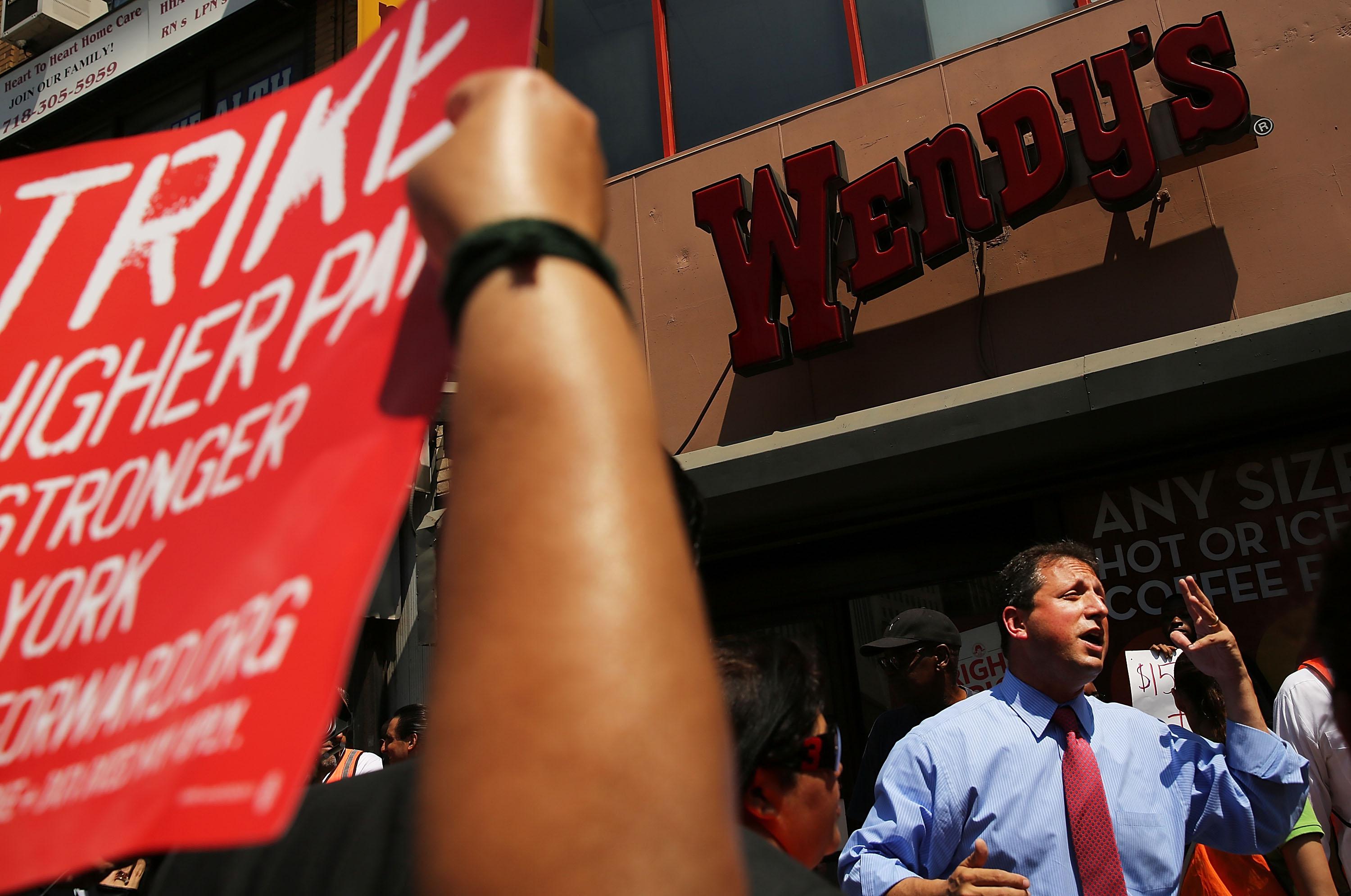The subject of wages in the food service industry has been in the news a lot this summer, so I’d like to tediously drag the conversation back to my obsession: Construction. Here is a map from the Bureau of Labor Statistics’ Occupational Employment Statistics office showing annual wages of food service workers by metropolitan area:
You can see that there is quite a bit of diversity. The national median is $18,930 a year whereas where I live in the Washington/Arlington/Alexandria Metropolitan Division the median is $20,960. Now that $20,960 is not a princely sum by any means. But it does represent a 10 percent increase relative to the national median. That’s not bad. Any time you can create a 10 percent boost in earnings for a hard-pressed group of people you’re doing something useful. But of course it’s actually far from clear that a food service worker in the DC area has a higher real standard of living than the typical American food service worker. That’s because the “cost of living” is substantially above average around these parts. Housing, in particular, is very expensive. You can, to be sure, get a cheap place to live by living somewhere unsafe or somewhere with a very unpleasant commute but one’s ability to avoid those outcomes by living in the Topeka area could constitute a perfectly good reason to pass up the DC wage premium.
So what if we substantially deregulated land use in the DC area. That would mean skyscrapers downtown, but also denser construction throughout the tony suburban sections of Arlington and west of Rock Creek Park and in Bethesda and into Fairfax County. Well one thing is that you’d have a lot of new jobs for construction workers. And though construction jobs, again, are hardly the highest paying jobs in the world even the relatively lowly “construction laborers” (as opposed to more specialized trademan like electricians) earn a median of $30,000 a year—i.e. a huge premium over a food service worker. People working in construction occupations in general earn a median of $40,000 a year. So with this construction boom, several things happen simultaneously.
One is that you create a bunch of blue collar jobs that pay better than food service jobs.
A second is that you create higher real living standards for the people who currently hold food service jobs in the DC area by increasing the supply of housing.
A third is that since the population of the DC area is growing, you create more opportunities for food service workers to move to the DC area where food service wages are higher.
Now imagine if you can think about doing that not just in the DC area, but also in the New York area and the Boston area and in San Francisco and Silicon Valley and in the Westside of Los Angeles and in Seattle and Denver and everyplace else on the map where if someone brings up high incomes relative to the national average you’re going to be inclined to say “but what about the cost of living?” That’s not going to usher in a new utopia. And obviously you’d need to build new transportation infrastructure and more schools and all the rest to accommodate the population transfers. But living standards would rise quite a bit, especially at the lower end. And part of the appeal should be precisely that it’s not a utopian outcome. It’s a very plausible outcome. You have places where food service workers earn above average wages. These are generally places that—as seen in the high price of housing—there is plenty of demand for additional housing stock. To create more housing stock requires the hiring of blue collar workers for occupations that pay more than food service jobs pay. If you hire those building trades workers, let more people move in, and then let more restaurants open in the higher-wage areas, you’ll have broadly higher earnings across the board as the population shifts en masse to higher wage, higher productivity areas.
Population migration has always been key to American opportunity—heck, the essence of the American opportunity is that it starts with the idea that you should move to America!—but right now those opportunities are generally to be found in places where it’s too hard to build the buildings to accommodate more migrants.
